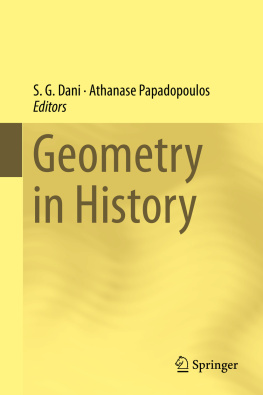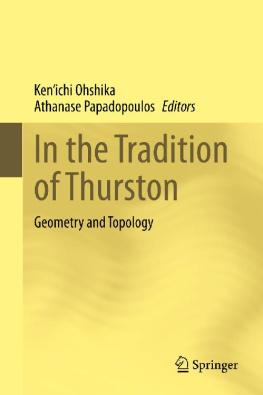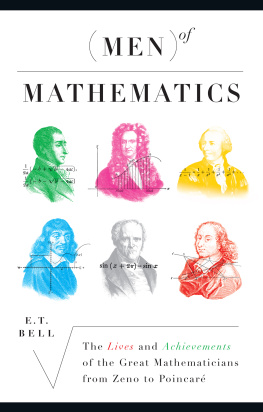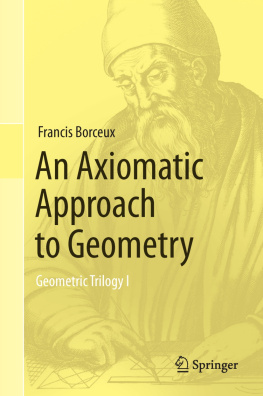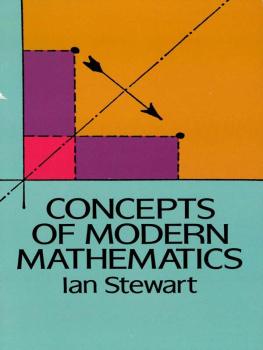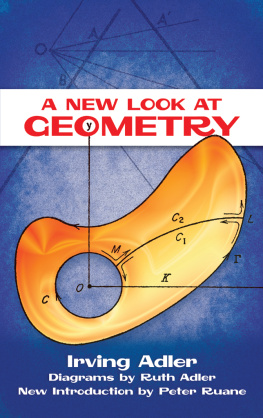S. G. Dani - Geometry in History
Here you can read online S. G. Dani - Geometry in History full text of the book (entire story) in english for free. Download pdf and epub, get meaning, cover and reviews about this ebook. year: 2019, publisher: Springer Nature, genre: Romance novel. Description of the work, (preface) as well as reviews are available. Best literature library LitArk.com created for fans of good reading and offers a wide selection of genres:
Romance novel
Science fiction
Adventure
Detective
Science
History
Home and family
Prose
Art
Politics
Computer
Non-fiction
Religion
Business
Children
Humor
Choose a favorite category and find really read worthwhile books. Enjoy immersion in the world of imagination, feel the emotions of the characters or learn something new for yourself, make an fascinating discovery.
- Book:Geometry in History
- Author:
- Publisher:Springer Nature
- Genre:
- Year:2019
- Rating:3 / 5
- Favourites:Add to favourites
- Your mark:
- 60
- 1
- 2
- 3
- 4
- 5
Geometry in History: summary, description and annotation
We offer to read an annotation, description, summary or preface (depends on what the author of the book "Geometry in History" wrote himself). If you haven't found the necessary information about the book — write in the comments, we will try to find it.
Geometry in History — read online for free the complete book (whole text) full work
Below is the text of the book, divided by pages. System saving the place of the last page read, allows you to conveniently read the book "Geometry in History" online for free, without having to search again every time where you left off. Put a bookmark, and you can go to the page where you finished reading at any time.
Font size:
Interval:
Bookmark:
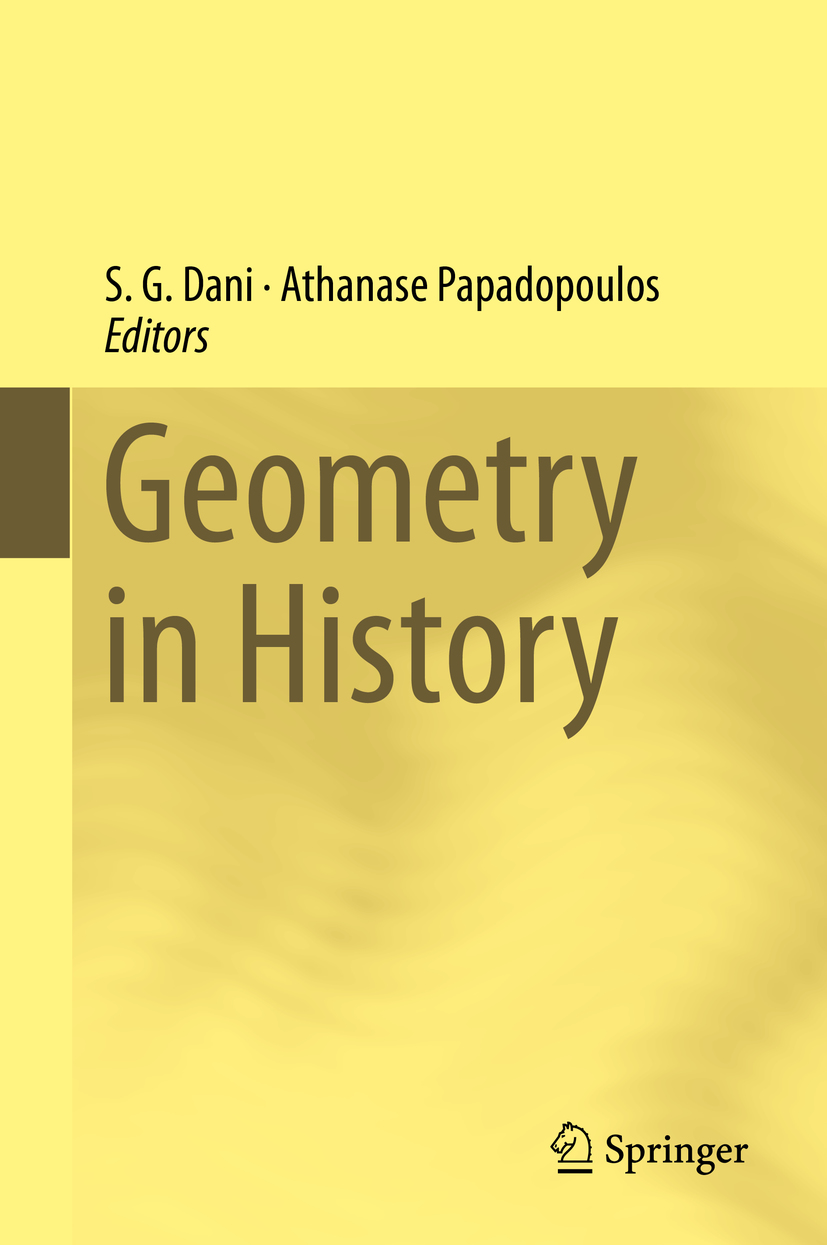

This Springer imprint is published by the registered company Springer Nature Switzerland AG.
The registered company address is: Gewerbestrasse 11, 6330 Cham, Switzerland
This volume consists of a collection of essays on geometry from a historical viewpoint, addressed to the general mathematical community interested in the history of ideas and their evolution.
In planning this book as editors we went with the conviction that writing on the basic geometrical concepts from a historical perspective is an essential element of our science literature, and that geometrico-historical surveys constitute an important ingredient, alongside purely mathematical and historical articles, for the development of the subject. We have also held, for many years, that we need such articles written by mathematicians, dealing with topics and ideas that they are directly engaged with and consider as fundamental, and it was our endeavour to put together an ensemble of articles of this variety on a broad spectrum of topics that constitute the general area of geometry. It actually turned out to be a nontrivial task to find colleagues capable and willing to write on the history of their field, but perseverance eventually led to this volume coming to fruition. We warmly thank all the authors of this volume for their contribution. We also thank all the referees, who shall stay anonymous, for their critical comments and constructive suggestions that helped substantially in improving the quality of the volume, and Elena Griniari for her editorial support.
The work on this book was completed during a stay of the second editor at the Yau Mathematical Center of Tsinghua University (Beijing).
Comprehension of shapes has played a pivotal role, alongside of numbers, in the progress of civilizations, from the beginning. Significant engagement with shapes, or geometry , is seen in the ancient cultures of Egypt, Mesopotamia, India, China, etc., from the very early times. A systematic approach to the subject, turning it into a discipline with an axiomatic foundation, was developed by the ancient Greeks, which served crucially as a basis to later rewritings and developments at the hands of Arab mathematicians during the Middle ages and in turn to the modern advent. The Greeks also addressed various philosophical issues associated with the subject that have been very influential in the later developments.
From the point of view of the subject of history of mathematics, there is a need for viewing the historical development of ideas of geometry as an integral whole. The present endeavour is seen by the editors as a limited attempt in that direction, focusing mainly on the historical antecedents of modern geometry and the internal relations within the latter. In the overall context, the editors also felt the need to concentrate on bringing out the perspective of working mathematicians actively engaged with the ideas involved, in their respective areas, as against that of historians of mathematicians viewing developments in mathematics from the outside, a pursuit in which the issues involved and the flavour of the output are different from what we seek to explore in this project.
Mathematicians build upon the works of their predecessors, which they regularly reshape, refine and reinterpret (sometimes misinterpret). There are countless examples of ideas discovered concurrently and independently and of others that stayed in the dark until being rediscovered and used much later. This makes the history of mathematical ideas a living and intricate topic, and any attempt to say something significant in this domain requires, on the one hand, a deep knowledge of the subject and also, on the other hand, a comprehensive vision of history. In the perception of the editors of this volume, the mathematical community is in acute need of articles presenting major geometrical ideas in a right historical perspective, paying attention also to the philosophical issues around the activity. This was a motivation for bringing out this volume, and we are happy to see that many of the essays in it have turned out to be a confluence of mathematics, history and philosophy, together with state-of-the-art mathematical research.
The book is divided into two parts. The first one, consisting of seven chapters, is concerned with topics that have roots in Greek antiquity and ramifications all through the history of mathematics. The second part, consisting of 12 chapters, treats more modern topics. We now describe briefly the themes dealt with in the individual chapters.
The opening essay by Stylianos Negrepontis is on a topic from the fourth century BCE, namely, Platos theory of anthyphairesis, an idea that would serve as a precursor of continued fractions. It may be worthwhile to recall here that Plato was above all a mathematician and that his conceptualization of the world is deeply rooted in mathematics. The goal of this article is to explain the anthyphairetic nature of Platos dialectics which is at the foundation of his theories of Ideas, of true Beings, of knowledge and of the distinction he draws between intelligible and sensible Beings. Negrepontis defends the thesis that the whole of Platos philosophical system is based on the concept of periodic anthyphairesis. He also provides an explanation of Platos praise of geometry and his criticism of its practice by the geometers. Plato criticized the axiomatic method, by which mathematicians rely on hypotheses that, according to him, have nothing to do with true knowledge. He was at the same time critical of the geometers use of diagrams and of topics such as Eudoxus theory of ratios (on which the theory of Dedekind cuts is based), of Archytas theory of quadratic and cubic incommensurabilities and of the use of the notion of geometric point in the foundations of geometry. Instead, Plato claims that the method of Division and Collectiona philosophical expression of the periodic anthyphairesisshould be the only one to be used in the acquisition of all knowledge in geometry, in particular in the construction of numbers and of the straight line. At the same time, the author also proposes an explanation as to why geometry was so important to Plato.
Font size:
Interval:
Bookmark:
Similar books «Geometry in History»
Look at similar books to Geometry in History. We have selected literature similar in name and meaning in the hope of providing readers with more options to find new, interesting, not yet read works.
Discussion, reviews of the book Geometry in History and just readers' own opinions. Leave your comments, write what you think about the work, its meaning or the main characters. Specify what exactly you liked and what you didn't like, and why you think so.

